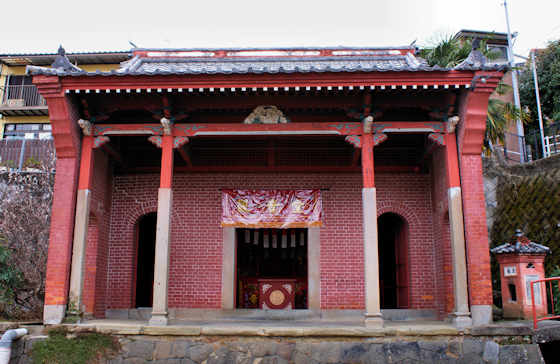Showing posts with label kannon. Show all posts
Showing posts with label kannon. Show all posts
Wednesday, October 4, 2023
Oreki Temple 7 Kyushu Fudo Myo Pilgrimage
Labels:
dragon,
en no gyoja,
Fudo Myojin,
kannon,
Kunisakihanto Minemichi Long Trail,
kyushu fudo,
nio,
tendai
Sunday, September 17, 2023
Fukusaiji Temple
In its current form, it was built in 1979, however, it was originally founded as the second of the Chinese temples in 1628, just 5 years after Kofukuji.
The previous post was on the nearby Shofukuji Temple, another of the Chinese Zen temples of Nagasaki, but which survived the war intact.
Tuesday, August 22, 2023
Kannondo Shrine Tojin Yashiki
Guanyin also became a popular deity among various branches of Chinese folk religions. Enshrined alongside Guanyin here is also Guanyu, a popular deity associated with business prosperity and also enshrined in the nearby Tenkodo Shrine.
Labels:
kannon,
kyushu108,
nagasaki,
tojin yashiki
Tuesday, May 23, 2023
Worldly Benefits at Tsubakido Temple
As well as Kannon, the other very, very popular bodhisattva in Japan is Jizo, of which Tsubakido has many examples including the modern Mizuko Jizo, and an Osasuri Jizo that you rub on the part of the statues that you desire healing for your own body.
Labels:
jizo,
kannon,
Kunisakihanto Minemichi Long Trail,
kyushu fudo,
mizuko jizo,
temple
Sunday, May 21, 2023
Sairinji Temple 48 Shikoku Ohenro Pilgrimage
Jonofuchi park surrounds the pond and is a popular spot. The pond has very clear water and many large koi can be seen. Sairinji Temple is about 300 meters to the NE.
Originally founded by Gyoki in 741, at that time it was located some distance away in the mountains to the northeast of the current location. When Kobo Daishi visited he arranged to have it moved to its current location.
The temple burned down in the late 17th century and rebuilding began in 1700. The temple received support from the ruling Matsuyama Clan with more major rebuilding in the late Edo Period. The current Daishido was rebuilt in 2008.
Subscribe to:
Posts (Atom)






























































